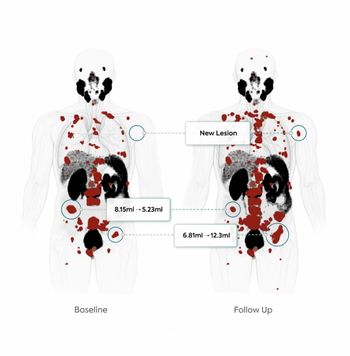
New Interventional Radiology Treatment Relieves Pain, Potentially Decreasing Opiate Use
Cooled radiofrequency ablation (c-RFA) for moderate-to-severe hip and shoulder arthritis could help some patients avoid surgery and reduce the risk of opioid addiction.
A new interventional radiology treatment could provide shoulder and hip joint pain relief for patients who no longer benefit from anesthetic or corticosteroid injections, but who also want to avoid both surgery and addictive opiates.
According to results from a study that will be presented during this year's Radiological Society of North America (RSNA) annual meeting, cooled radiofrequency ablation (c-RFA) can offer significant pain relief for patients who have advanced degenerative arthritis, decreasing shoulder and knee pain to 70 percent-to-85 percent of patients.
“In our study, the results were very impressive and promising,” said Felix M. Gonzalez, M.D., from the Emory University School of Medicine radiology department. He presented similar findings with knee arthritis during last year’s RSNA meeting.
For more coverage based on industry expert insights and research, subscribe to the Diagnostic Imaging e-Newsletter
The injections typically used to treat patients with osteoarthritis-associated pain can become less effective over time, he said. Joint replacement surgery is an option, but some patients are ineligible for other health reasons while others simply want to avoid invasive surgery. For some patients, highly-addictive opiates have been the only other option.
Gonzalez’s team wanted to provide an alternative. For c-RFA, providers use needles placed near the sensory nerves around the shoulder and hip joints to deliver radiofrequency, a low-grade current that can stun the nerves, slowing down the pain transmissions to the brain.
To determine c-RFA’s efficacy, the team tested the therapy with 23 people for whom both intra-articular lidocaine-steroid injections and anti-inflammatory pain control were no longer effective – 12 with shoulder pain and 11 with hip pain. They provided treatment for two-to-three weeks after patients received a diagnostic anesthetic nerve block, and patients gave feedback via survey on their pain levels, range-of-motion, and functionality both before and three months after the ablation procedures.
“The patients with shoulder pain had a decrease in pain of 85 percent, and an increase in function of approximately 74 percent,” Gonzalez said. “In patients with hip pain, there was a 70-percent reduction in pain, and a gain in function of approximately 66 percent.”
These results are significant, he said, because they could help patients avoid surgery and could be a pain relief option that helps to reduce the epidemic of opioid addiction.
“This procedure is a last resort for patients who are unable to be physically active and may develop a narcotic addiction,” he said. “Until recently, there was no other alternative for the treatment of patients at the end of the arthritis pathway who do not qualify for surgery or are unwilling to undergo a surgical procedure.”
But, the impact of this therapy does not necessarily stop with shoulder and hip pain, he said. It is possible that c-RFA has applications in oncology and in treating sickle cell anemia-related pain syndrome.
“We’re just scratching the surface here,” he said. “We would like to explore efficacy of the treatment on patients in other settings like trauma, amputations, and especially in cancer patients with metastatic disease.”
Newsletter
Stay at the forefront of radiology with the Diagnostic Imaging newsletter, delivering the latest news, clinical insights, and imaging advancements for today’s radiologists.




























